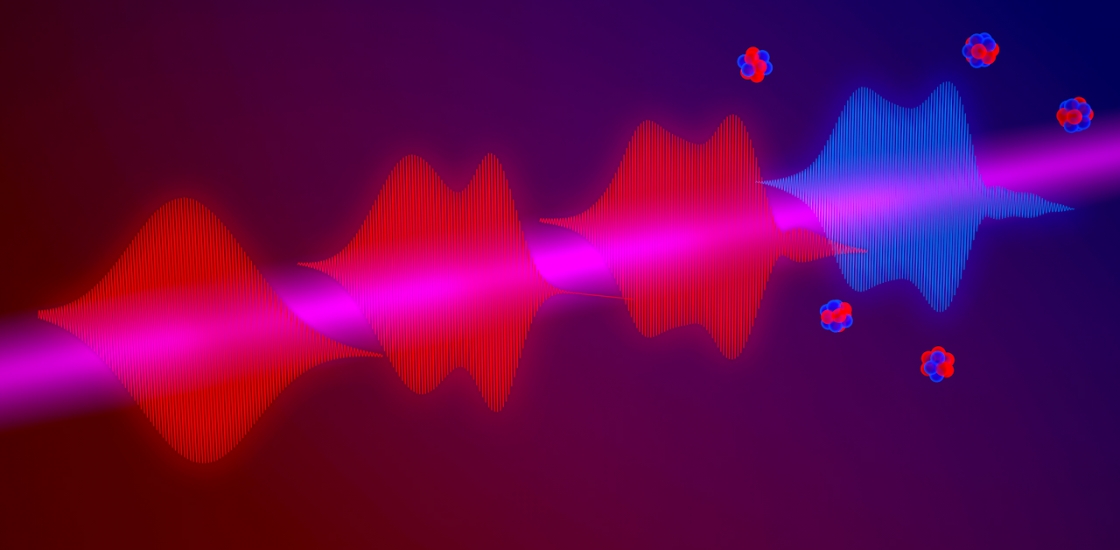Many physicists use lasers to study quantum mechanics, atomic and molecular physics and nanophysics. While these lasers can be helpful in the research process, there are certain constraints for the researcher. According to JILA Fellow Andreas Becker: "For certain wavelengths of these laser pulses, such as deep ultraviolet, you may not know, or not be able to measure, the temporal profile." The temporal profile of a laser pulse is, however, important for researchers when analyzing data. "A lot of people cannot fully analyze their data, because they don't know the details of the pulse that was used to produce the data," said graduate student Spencer Walker. As a way to research this constraint, the Becker and Jaron-Becker laboratories collaborated to publish a paper in Optics Letters, suggesting a possible solution.
With a Little Help From Chemistry
When looking for a possible solution to solving the temporal profile problems at certain wavelengths, Spencer Walker and former graduate student Ran Brynn Reiff turned to simulations, statistics, and other research areas. Becker explained: "it was so essential to have Brynn Reiff there. He was simulating these kinds of pulses for his whole Ph.D., and from his work we could simulate how these pulses look without using experiment." Key in their studies was to use the ionization signal produced by duplicates of the unknown simulated pulse, which were delayed in time relative to each other–a method called autocorrelation. The process of ionization happens when an atom or molecule acquires a positive charge by losing electrons when interacting with the laser pulses.
In their calculations, the team compared the ionization signal from the unknown pulse to those calculated from theoretical temporal profiles using Gaussian functions. Gaussian functions have many applications, for example, in statistics they are used as the density function of the normal distribution of data. First author Spencer Walker applied these Gaussian functions in a particular way to the simulations in order to suggest theoretical temporal profiles of laser pulses. "I really just got the idea from chemistry," Walker stated. "Chemists represent the quantum mechanical electronic wave function using Gaussian functions. We took the electric field of the laser and decided to expand it using Gaussian functions as well. And since for the ionization probability we had analytic formulas when using Gaussian functions, we were able to do calculations much faster than if we had to do the entire problem numerically." From the Gaussian functions and the ionization signal via the electric field, the team was able to reconstruct the temporal profiles of the unknown pulses.
The Next Steps:
After the team identified a new way to reconstruct temporal profiles of unknown laser pulses, the next steps would be to turn to their experimental colleagues. "We're looking forward to someone testing our theory with an experiment," Becker added. Time will reveal if their theory will help make other research easier. "Basically, just knowing what the pulse actually looks like is very important for a lot of applications," Reiff explained. "It's important for all sorts of very precise sensing and probing applications, where if you know exactly what your pulse looks like, then you can shine your laser on something that you don't know, and get a lot of information on the unknown object from knowing about your laser pulse. The more you know about your pulse, the more control you have over the pulse, the more you can do with it." As the JILA theorists continue looking into methods to measure temporal profiles, their research will have a positive impact on other research using lasers to study physics and other subjects.
This research was supported by a MURI grant and the NSF.
Written by JILA Science Communicator, Kenna Castleberry



 The Physics Frontiers Centers (PFC) program supports university-based centers and institutes where the collective efforts of a larger group of individuals can enable transformational advances in the most promising research areas. The program is designed to foster major breakthroughs at the intellectual frontiers of physics by providing needed resources such as combinations of talents, skills, disciplines, and/or specialized infrastructure, not usually available to individual investigators or small groups, in an environment in which the collective efforts of the larger group can be shown to be seminal to promoting significant progress in the science and the education of students. PFCs also include creative, substantive activities aimed at enhancing education, broadening participation of traditionally underrepresented groups, and outreach to the scientific community and general public.
The Physics Frontiers Centers (PFC) program supports university-based centers and institutes where the collective efforts of a larger group of individuals can enable transformational advances in the most promising research areas. The program is designed to foster major breakthroughs at the intellectual frontiers of physics by providing needed resources such as combinations of talents, skills, disciplines, and/or specialized infrastructure, not usually available to individual investigators or small groups, in an environment in which the collective efforts of the larger group can be shown to be seminal to promoting significant progress in the science and the education of students. PFCs also include creative, substantive activities aimed at enhancing education, broadening participation of traditionally underrepresented groups, and outreach to the scientific community and general public.